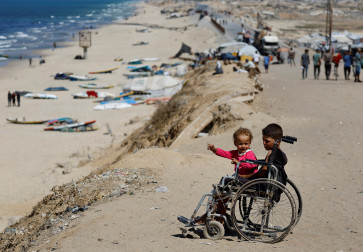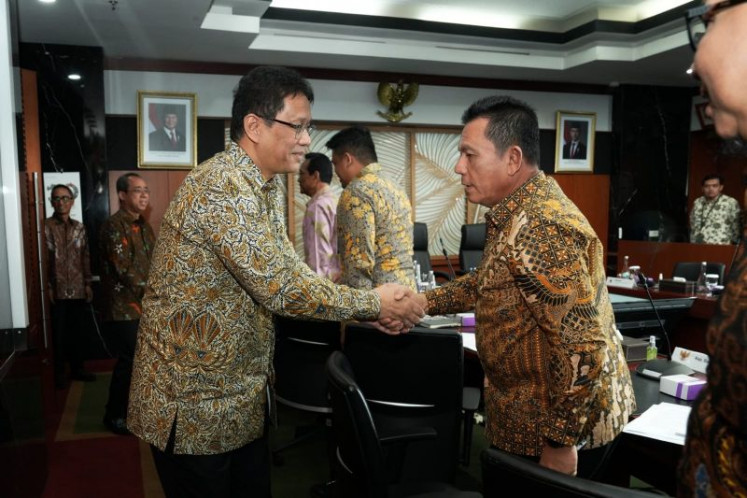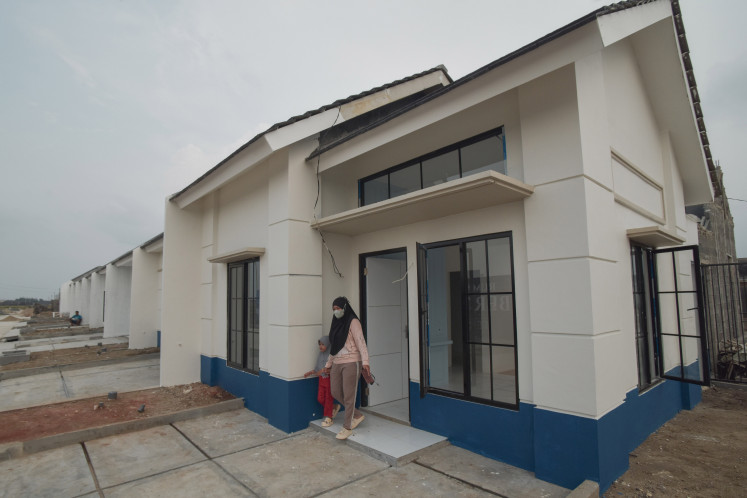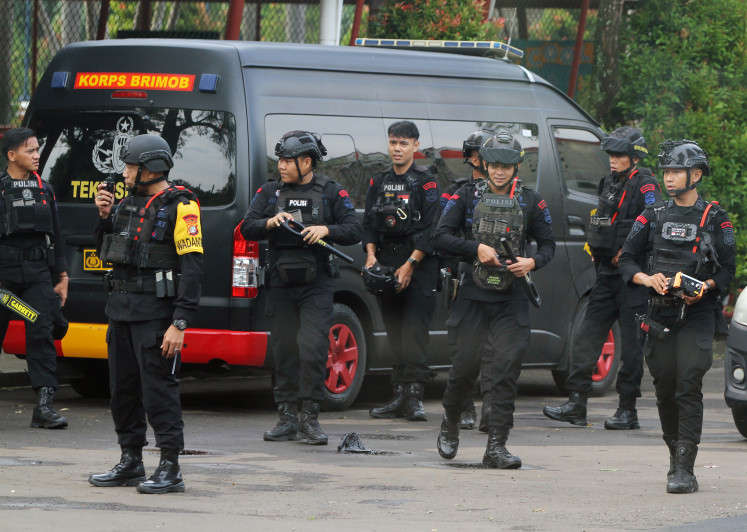Popular Reads
Top Results
Can't find what you're looking for?
View all search resultsPopular Reads
Top Results
Can't find what you're looking for?
View all search resultsExecutive Column: Better pricing structure needed for geothermal development: Chevron
Javier A
Change text size
Gift Premium Articles
to Anyone
Javier A. La Rosa. Courtesy of Chevron
Indonesia is among the few countries blessed with abundant geothermal energy resources. However, most of its geothermal resources remain untapped. Development of renewable energy has been hampered by various problems, specifically the legal aspects pertaining to the development of geothermal resources in forest areas and fair prices of geothermal-based electricity, which investors will sell to state-owned electricity company PT PLN.
Chevron Geothermal & Power president director Javier A. La Rosa explored the issues in a recent interview with The Jakarta Post's Raras Cahyafitri. Below are excerpts from the interview.
Question: What obstacles are hampering Indonesia's aim of developing geothermal potential?
Answer: I would say there are three areas that we need to work on. As industry players, we need to keep investing in technology to make the future of geothermal development a success.
Technology is a fundamental piece of the equation of bringing electricity; bringing energy to the people, the population.
The second area is that communities need to work with the government to get access to resources. Most of the resources are in forest areas and right now we don't have access to forest areas.
The potential is huge but a lot of that potential is located in areas that we cannot access.
I don't want to speak for the government. It knows what's best for Indonesia and it is working to find solutions and deciding on how those resources can be accessed. The third point that I would I have to bring up is the pricing structure.
Indonesia has significant resources, the largest resources in the world, and has developed some. The industry is only able to develop less than 5 percent of the resources. If you look at the Philippines, it has developed most of its resources, it's very mature.
New Zealand, Australia and Iceland have been able to develop their resources. The level of utilization of their resources is very high while Indonesia is at the bottom.
Indonesia has the highest amount of resources but the lowest utilization rate.
It is time for geothermal industry in Indonesia to take off because the world is growing.
Energy needs are growing. We are expected to grow from 7 billion people to 9 billion people in the next 25 years. With that growth, comes energy growth.
Now people are coming from rural areas to urban areas. With that, also comes energy growth. So, energy demand is increasing significantly.
Regarding the pricing structure, how do you see the current system and the planned new ceiling price system?
It's an interest mechanism. I think there are many mechanisms that can work.
At the end of the day, the mechanism can vary and we may have different opinions on the mechanism. The mechanism itself could be good.
The question is the level ' is it high enough to make geothermal viable? If that ceiling price is too low and players start bidding over that price, we're going to end up at a point where the projects cannot be developed.
If we look at how much we pay, how much the government pays for the oil, how much the government will pay for liquefied natural gas (LNG), and how much the government pays for geothermal, that will give you an idea of how high it could be.
But of course, we have to understand that there are many other variables that the government needs to consider.
And it needs to evaluate the overall economy and evaluate the benefits that we bring. Then
hopefully there will be a good solution.
The current price is uneconomical. I think there is very good alignment among all places, the Energy Ministry [the Energy and Mineral Resources Ministry], the Finance Ministry, among the stakeholders and among the geothermal industry players.
That's why the government now has hired an external consultant to develop this mechanism and to find the proper price.
Chevron's existing geothermal plant capacity is now 647 megawatts. What's the next expansion plan?
Chevron is committed to investing in many projects. We have a large portfolio of opportunities. We have our current assets in the Philippines and Indonesia, which is about 900 megawatts in capacity [in total] for the two countries, and we have a large portfolio we are trying to progress.
We are working with the government and expecting the new regulation to come, the new price to come, which will make those projects viable.
We have invested in two projects, Salak and Darajat ' more than US$1 billion in the last 30 years.
We are going to evaluate every single opportunity that comes to us. There are opportunities and those require a lot of investment.
And we are prepared to move forward if they become economically viable.
Many projects are in a difficult situation right now because of the pricing structures.
The ministry is working on one set of regulations to allow industry to expand. So, we are waiting for these regulations to allow us to progress with this project.
I believe that most of the Greenfield project, new projects, are in expectation mode.
Greenfield expansions are waiting for these important changes in the regulations that will allow the project to move forward.
If you look at the projects we have in Indonesia, 800 mw were developed 20 years ago. The other 400 mw were developed in the last 10 years.
Chevron is planning a project in Suoh-Sekincau, Lampung. What progress has been made?
Suoh-Sekincau is under evaluation right now. We have carried out some activity in the area and we are evaluating the resource potential.
We are working with the government and the ministry, discussing some of the initial resources we have encountered. I cannot disclose the resources, however.
There is also another project at Mount Ceremai. How's that going?
There is no activity in Ceremai ' not because we do not want to carry out activity. But this is normal.
We took part in the tender, which was announced last year, and we are now in the process of building the appropriate partnership to move the project forward.
We have to form a partnership with a national company and we are working toward that.
The partnership scheme will be the same as that with Darajat. Five percent [for the local partner] is still on the negotiations table.
It could be 5 percent, it could be more.










